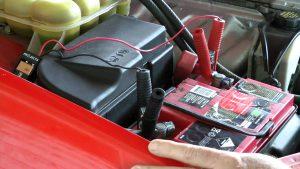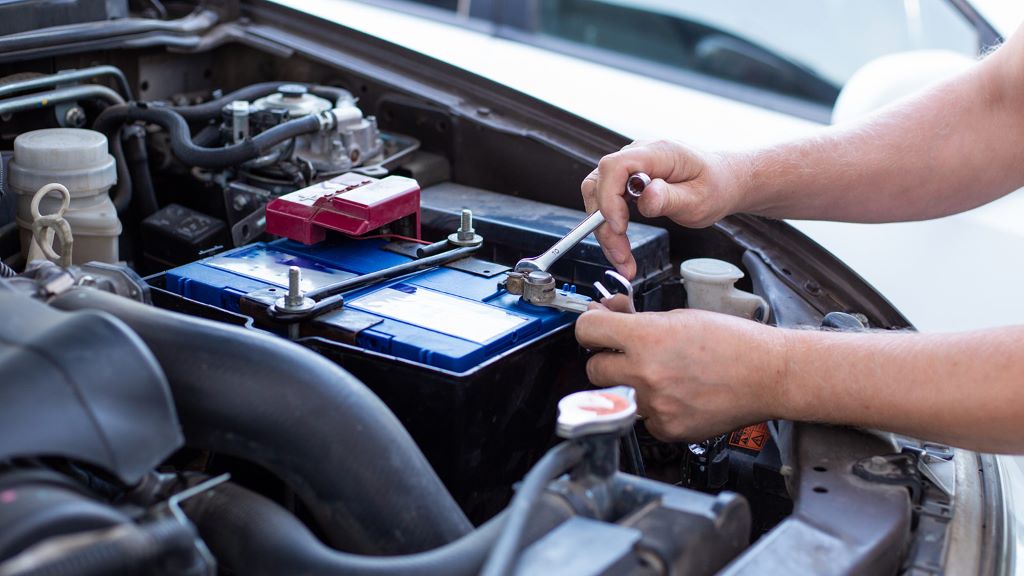While most batteries last an average three to five years, bad car habits can shorten this span. In any case, if you are headed to change car battery, it doesn’t need to be rocket science.
Just like every other part in a car, your car’s battery also has a set life. This is why changing batteries is not only a vital part of maintaining old cars, but also for relatively new cars.
Contents
Battery Replacement: How To DIY In 6 Easy Steps
You can follow a few simple steps, along with some precautions, and do it perfectly well on your own. But, before you do, there are some important things that you will need.
Things You Will Need to Change Car Battery
- Replacement battery (the one that is recommended in your car owner’s manual)
- Latex/rubber gloves
- Glasses for protecting your eyes
- 0-14 mm socket and extension bar
- Old blanket/sheet
- Rags
Let’s see how changing your car’s battery can be as easy as changing a car tire within minutes.
Steps To Safely Change Car Battery
Step 1: Start with the Bonnet
Once you have all these things in place, start with opening the bonnet. Now, locate the battery in the bonnet. It is a good idea to have your car’s handbook for reference in case of any confusion.
Step 2: It’s All about Positive and Negative
Now locate both positive (+ve) and negative (-ve) terminals. You will see black wires running along the –ve, and red along the +ve.
You will see a clamp-like retaining nut on the positive terminal. Pull it away, ensuring that it does not touch the -ve terminal.
Now cover the positive terminal securely with a rag. This will protect you from electric shock and/or short circuit due to opposite charges coming in contact with each other.

SEE MORE:
- These Seemingly Harmless Suspension Mods could be Destroying Your Car
- What To Take Into Consideration When Purchasing A Car Battery Trickle Charger?
Step 3: Making Sure You don’t Forget the Negative
Now, repeat the same process with the negative terminal, covering it the same way like the +ve.
Make sure to cover the wing of the car with an old blanket. This way, you won’t end up scratching it while you change the battery. It will also protect it in case of any acid spills.
Step 4: Loosen and Release
Now, locate the securing bolt and loosen it with the socket. It is usually found on the side of the battery pretty down low. This is the bolt that holds the battery in place. You can also use a spanner to loosen it.
Unfasten the battery from its place. Remove the clamp that is securing the battery and carefully lift it out vertically. Remember that the battery has quite some weight. So, keep your grip strong.
If you are not sure that you can lift it up, do care to ask for help from someone who can help you change car battery.
Step 5: Replacing the Old with the New
Keep the old battery aside. Lift the new battery vertically and put right where you picked the old battery from. Now, take the battery securing clamp and put it in place by securing the bolt tightly.
Step 6: It’s about Positives and Negatives All Over Again
Remove the rags from the positive terminal and connect it first, and the negative later. Secure each tightly, making sure they do not come in contact with each other.
Now, also put the covers back and voila!

Some Important Precautions
Remember, whether it’s a manual drive or an automatic, taking precautions is a must.
- Don’t fit an old battery. Different cars have different battery specifications.
- Dispose the old battery responsibly
- Keep your car stereo reset code handy (in the owner’s manual) because it will be reset, along with the clock.
FAQs
1. Can I jumpstart a completely dead battery instead of replacing it?
Jumpstarting can temporarily revive a dead battery, but if it repeatedly loses charge, it’s better to replace it as it may indicate a failing battery.
2. How do I dispose of the old car battery responsibly?
Car batteries contain hazardous materials. Most auto parts stores and recycling centers accept old batteries for recycling. Be sure to recycle them properly to protect the environment.
3. Are there any special considerations for changing a car battery in extreme weather conditions?
Extremely hot or cold weather can affect battery performance. In cold weather, make sure the replacement battery has adequate cold-cranking amps (CCA). In hot weather, keep the battery cool during installation.
4. Can changing a car battery affect the vehicle’s electronics or computer systems?
Disconnecting the battery may reset some vehicle settings, like the clock or radio presets, but it typically doesn’t harm the electronics or computer systems. Modern vehicles are designed to handle battery replacements.
5. What are the signs that my car battery needs replacement, and should I wait until it dies completely?
Signs include slow cranking, dim headlights, or warning lights on the dashboard. It’s best not to wait until the battery dies completely, as it can leave you stranded.
Check out this video from ChrisFix to learn how to test if your car battery is bad and how to change a dead car battery!
6. Can I use a higher-capacity battery for better performance?
You can use a battery with a higher CCA rating if it fits your vehicle, but it’s essential to check your vehicle’s specifications and consult with a professional for compatibility.
7. Can changing a car battery improve fuel efficiency or overall vehicle performance?
A fresh battery ensures proper electrical system function, which can indirectly impact fuel efficiency and overall performance, especially in modern vehicles with many electronic components.
8. Is it possible to damage the car’s electrical system while changing the battery?
While it’s unlikely, incorrect connections or accidental sparks can potentially damage the electrical system. Following proper procedures and safety precautions minimizes this risk.
If you find any difficulty along the way, don’t take matters entirely in your hands. Call a qualified mechanic to change car battery




Thanx for this vital information.
Thanx for this vital information.
Keep me posted espcially on fuel saving cars.
Incorrect proceedure for negative earth vehicles. NEVER NEVER take the positive + connection of the battery first. Always disconect the negative lead first. This electrocally isolates the battery from the car. With the negative still connected should you drop your spannner onto the positive battery post and the car metal parts you have dead short across the battery. Possibly an exploding battery with accid over your nice shiny car and YOU.